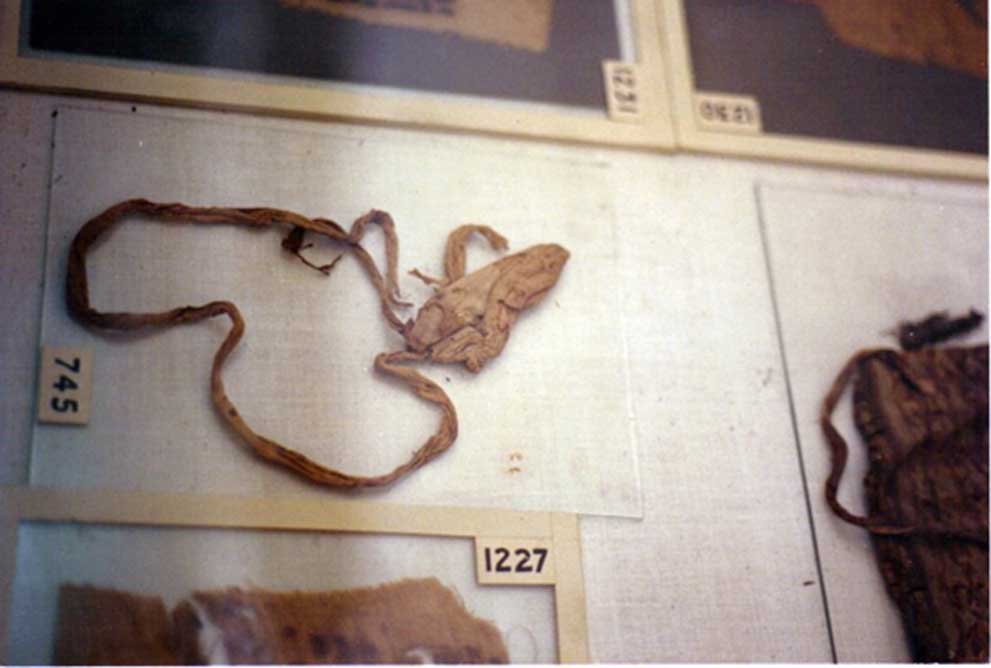The Egyptian tomb of King Tutankhamen is still being explored by archaeologists. There seems to be an endless supply of artifacts. But a recent discovery amongst the teenage pharaoh’s belongings is of the contraceptive variety- a linen condom. Looks like Tut’s attendants wanted to make sure that he was practicing safe 𝑠e𝑥 in the afterlife.
 King Tut’s condom
King Tut’s condom
While rubber wasn’t invented until the 19th century, humans have given contraception the old college try. The earliest known condom in history was from about 3000 B.C. in Crete, and was made from a sheep’s bladder. In Tut’s case, this sheath was soaked in olive oil. Unfortunately, it doesn’t seem to have been terribly effective as the remains of two fetuses were buried along with him. Not to sound like Maury Povich, but he WAS the father. Or perhaps it was intended simply to keep the pharaoh’s exalted flesh from touching those below him.
The efficacy of linen and oil was…one attempt. The Egyptians were enterprising in all sorts of ways, as evidenced by the Kahun Medical Papyrus. The document is known as the Gynaecological Papyrus, and focuses on women’s reproductive health. A pessary made from crocodile dung and some lost materials supposedly eliminated the chances of pregnancy. Apparently crocodile dung was a surmised to be a natural spermicide.

The Egyptians aren’t the only ones who tried to practice safe 𝑠e𝑥, but they may have been among the first. Other cultures followed with methods of their own. Honestly, if you want to find something fascinating to read about, look up human 𝑠e𝑥ual history and evolution. We guarantee you won’t be bored. And that’s just what they found in the tomb of an Egyptian king. Wonder what they’ll find for a queen.

A 3,000 year old Egyptian city has been discovered completely untouched by the passage of time. Thanks Dr. Zahi Hawass!
In “News”

An underground tunnel has been found at Taposiris Magna in Egypt. Which is, ominously, a temple dedicated to Osiris, the god of death. The 6.5-foot-tall, 4,300-foot-long was found 43 feet underground by archaeologist Kathleen Martinez. In addition to the tunnel that sits west of the ancient city of Alexandria, she…





